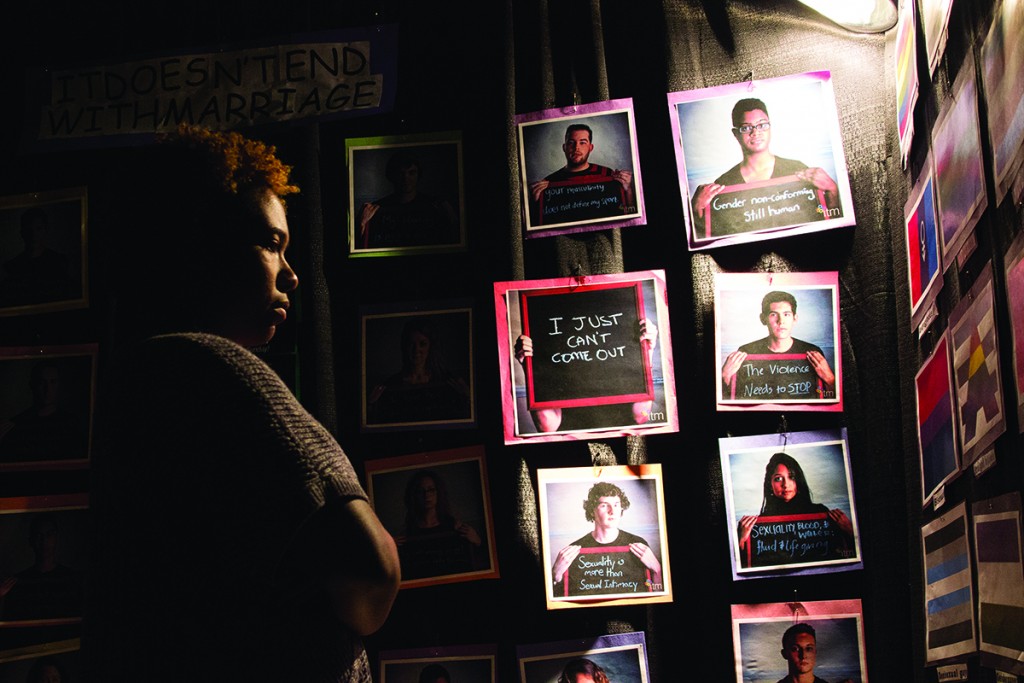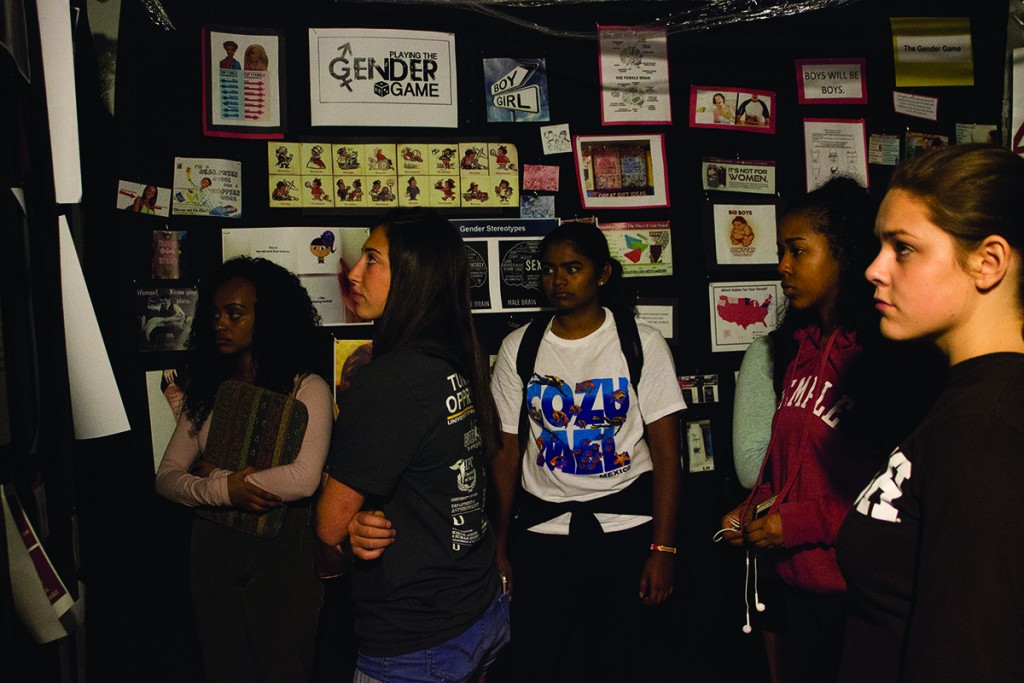Students and faculty members toured nine different rooms this week, exposing them to exhibits displaying some of the ongoing suffering around the world.
Sponsored by the William R. Butler Center for Service and Leadership Development, Tunnel of Oppression is a sensory-based multimedia exhibit designed by various student organizations to raise awareness of oppression. It started in the Senate Room on the third floor of the Shalala Student Center and spanned to the Zebersky Family Vista Room, running from Jan. 25-27.
The issues presented in each separate room were: tools of oppression, environment, mental health, LGBTQ, racism, women, human trafficking and immigration, religion, and the light at the end of the tunnel.
Each room was designed to show students that oppression is happening not only around the world, but also on campus.
“Not many people are exposed to these oppressed groups,” said Richa Panara, the student organization liaison of Tunnel of Oppression. “There are people on campus who go through these similar issues, and Tunnel of Oppression opens your eyes to some things that you may not know about.”
The nationally recognized program that takes place at more than 70 college campuses had a disclaimer that warns participants that the content could cause discomfort.
“The experience is not intended to offend or bring about tension,” the disclaimer said. “The tunnel is meant to be an educational experience and the views expressed in the tunnel are not the views of the University of Miami.”
Plastered in each room were quotes and audio from the oppressed, as well as statistics on injustices happening worldwide. Symbolic props such as a rope hanging from the ceiling with a chair under it, highlighting suicide and mental illness, or a toilet with tips on how to purge, were also on display.
Actors also appeared in rooms to emphasize an issue. In the human trafficking room, designed by the African Student Union and Planet Kreyol, a woman solemnly put lipstick on while looking at herself in the mirror. Playing in the background was a video of a human trafficking survivor, recounting the days when she was captured and repeatedly raped. She spoke of “smelling like semen” for weeks.
David Lin, a sophomore and First Year Fellows student of Stanford Residential College, found the visual experience to be eye-opening, challenging his perceptions of the world. The human trafficking room shocked him the most.
“That room caused my stomach to lurch. It was repulsive to see such atrocities happening in our world,” Lin said. “I never knew this issue was happening and it was sad to see… It is important to be exposed to these ideas so we can be challenged to think about these issues surrounding oppression.”

SPARK, a mentoring organization for young women, designed a room where participants were exposed to two harrowing phone calls from victims of abuse. One was a woman in great distress who had been abused by her partner. The second was a crying child on the phone with a police dispatcher, screaming for help in fear of her stepfather.
SpectrUM, the LGBT rights organization on campus, helped to construct a room that raised awareness of the issues faced by the LGBT community. Members displayed pictures of themselves holding up derogatory remarks said to them accompanied by personal stories that showed their struggles.
“When I came out to my parents, my whole life changed,” one anonymous story read. “I thought they would accept me … but I was wrong. They told me I was a mistake that needed to be fixed … I couldn’t be the perfect son they wanted and it hurt, but nothing hurt more than losing their love.”
Also included in the LGBTQ room were images of transgender women murdered in 2015, showing the violent prejudices that they still face. Earl Generato, the SpectrUM Tunnel of Oppression chair who organized and designed the room, wanted to remind participants that LGBT people still face discrimination.
“Many people around the world think that the issue of legalizing same-sex marriage will solve all the problems in the LGBTQ community, which is completely false,” Generato said. “There are so many ongoing issues, like discrimination in the workplace. You can still be discriminated and fired based on your sexual orientation throughout the country.”
Audio clips of people commenting on homosexuals played in the background of the room. They ranged from harmful insults to remarks from parents. The voice of a mother could be heard saying that she didn’t mind gay people as long as her children weren’t gay.
“The audio spoke to many levels to many of our members,” Generato said. “Hopefully, [students] going through the LGBTQ room would realize that there is so much more to think about to make the University of Miami a more accepting place, because there is a difference between diversity and acceptance, which people don’t realize.”
Additionally, the event was aided by 10 student organizations and more than 50 volunteers.
The racism room, designed by United Black Students (UBS), featured pictures of peaceful rallies at the Rock and the subsequent backlash that the black community faced on social media with screenshots of derogatory remarks made on Yik Yak. The room was designed to raise awareness about the existence of racism around the world and on campus.
Tony Marks, the recruitment chair for Tunnel of Oppression, emphasized that oppression is still present at the University of Miami despite it being one of the most diverse student populations in the nation.
“If seeing is believing, people who go through the tunnel will realize that these oppressions are happening,” Marks said. “We want to get people to start looking at themselves and their own actions. As Michael Jackson said, it starts with the man in the mirror.”






